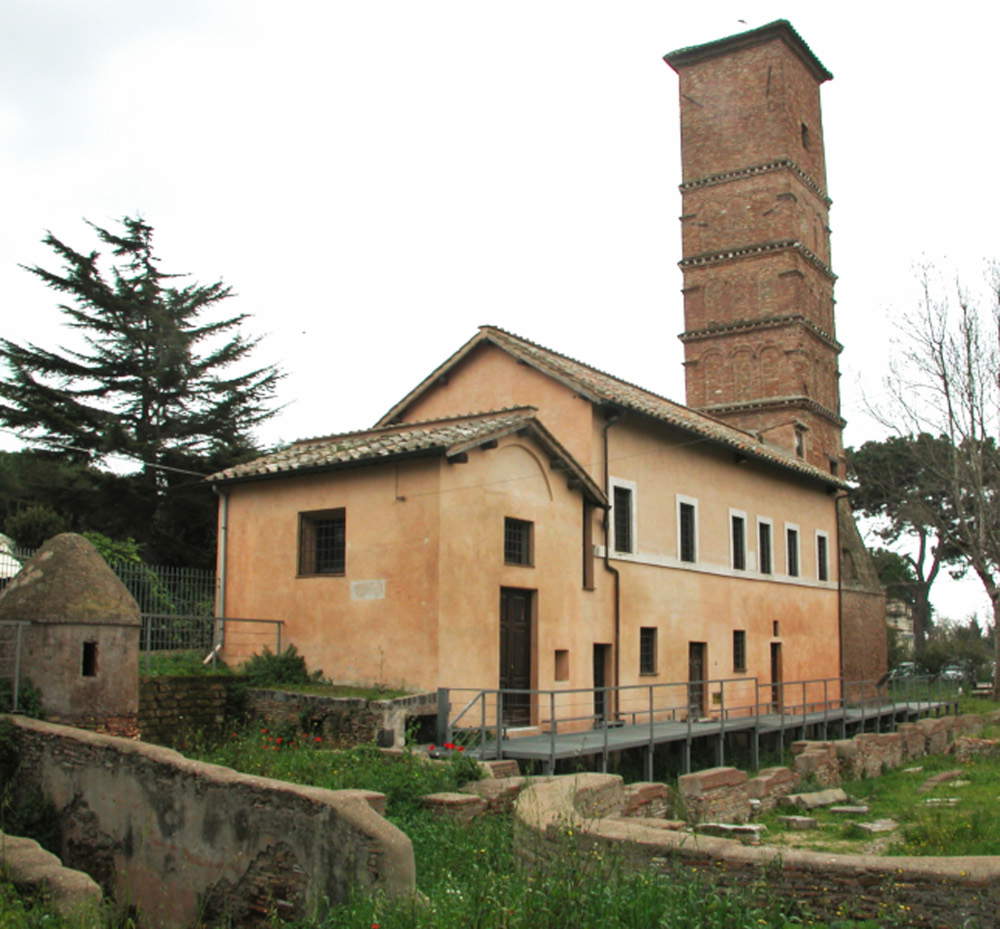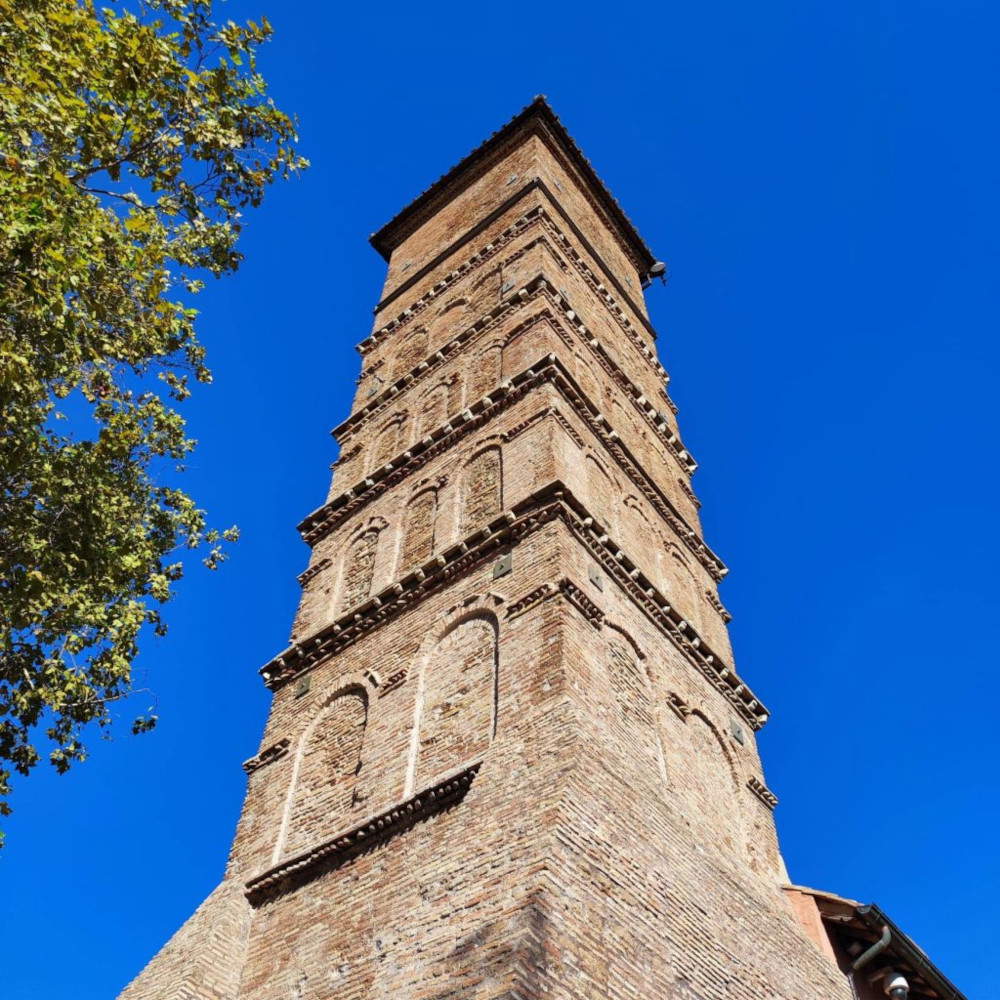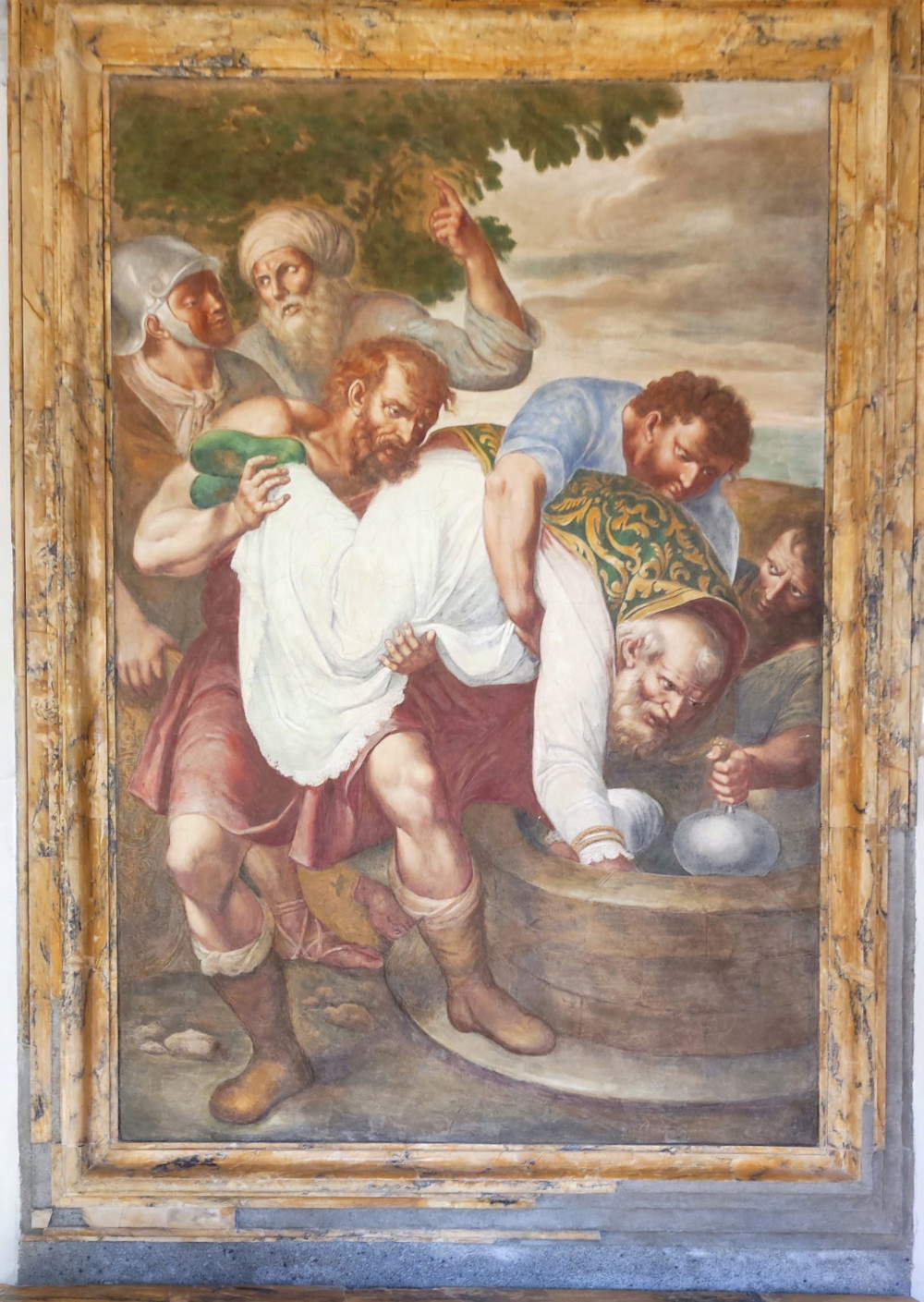Presented today in Fiumicino at the Monumental Complex of Sant’Ippolito on Isola Sacra the recent restoration work on the Conventino di Sant’Ippolito, in particular the Romanesque bell tower and the fresco in the Conventino chapel depicting the martyrdom of Hippolytus, patron saint of the city. With this intervention, the Ostia Antica Archaeological Park restores an identity monument through the resolution of degradation phenomena and the elimination of previous conservation interventions that, by type of materials or methodological choices, had altered its appearance. The project was supported by a series of scientific investigations and in-depth diagnostics. The archaeological complex of Sant’Ippolito consists of an early Christian basilica, a system of underground Roman cisterns and the medieval Conventino, over which stands the Romanesque bell tower, which is also clearly visible from the main roadway running towards Fiumicino Airport.
Work has been carried out to consolidate the bell tower and upgrade the systems of the entire complex. This intervention required the patching of the lesions present in the masonry from the brick curtain and included the placement of chains and tie rods and a metal ringing positioned at the level of the tower.
The fresco inside the Convent Chapel was now illegible due to the use of a thick layer of protective coating recognizable by both the glossy effect and the widespread bleaching throughout the surface. The restoration made it possible to restore the scene dramatically depicting the martyrdom of Hippolytus to its ancient hues and colors: according to tradition, the saint was in fact thrown into a well, with a stone around his neck.
The stone elements of the altar below appeared heavily lacunarated, fragmented or detached, evidence of a protracted process of deterioration over time. Heavy bleaching and a green biological patina were observed on all surfaces in a widespread manner.
The unveiling ceremony was attended by Fiumicino Mayor Mario Baccini, Director of the Archaeological Park of Ancient Ostia Alessandro D’Alessio, Bishop of Porto-Santa Rufina H.E. Archbishop Gianrico Ruzza, Museums General Director Massimo Osanna and Culture Minister Gennaro Sangiuliano.
“This is an extraordinary place in which one can perceive the echo of a millennial history clearly visible in every stone of it and which tells, even today, the sedimentation of eras, cultures, religions that have passed from here,” said the minister. “The valuable restoration work, recently completed, returns to this community a strong identity space, the early Christian basilica that housed the mortal remains of St. Hippolytus the martyr, patron saint of Fiumicino. A site of immense value and Christian devotion placed within the area that for so many centuries was the gateway of access and communication between Rome and the Empire, which experienced its splendor and, also, its decadence. A structure, that of the Complex of St. Hippolytus, located in the Ostia Antica Archaeological Park and in an area of great development.”
“One of the most significant features of the ancient city of Ostia and the gigantic hub that it came to constitute with the nearby ports of Claudius and Trajan, the largest maritime port of the ancient world, the port and gateway of Rome on the boundless territory of the Empire, is certainly that of having built a society to all intents and purposes multicultural and multireligious,” said Director D’Alessio. “Within this framework, alongside the ’classical’ places of worship of the Greco-Roman pantheon, such as those reserved for the so-called Eastern deities (Cybele, Mithras, Serapis), and again the oldest known synagogue in the Western Mediterranean, there is a real ’Christian geography’ that gradually established itself there. from the Oratory of St. Aurea and St. Ciriaco located near the theater, to the Basilica of Pianabella along the Via Ostiense, from the great Constantinian Basilica to that of Portus (Fiumicino). Adding to this rich early Christian palimpsest that so blatantly sketches the Christian roots of our civilization is the complex of the Basilica and Convent of the martyr St. Hippolytus, located in the Fiumicino area and a figure with a strong identity and deeply felt by the local community. At the conclusion of a complicated work of securing and restoring the monument, the Park today returns it to public use and to the instances of worship, albeit with times and modalities that will have to be established from time to time based on the unavoidable need to ensure its protection and best preservation.”
“Art is definitely the most understood and effective vehicle of education, integration and socialization that we can use. Returning to the territory and to the citizens of Fiumicino such an important work as the one celebrating the patron saint of the city, St. Hippolytus, is certainly a gesture of great altruism and of great interest to this municipality and its citizens. For this we thank the director of the Archaeological Park who has overseen all the work, all the colors who have been involved and especially Minister Sangiuliano who wanted to be here today to inaugurate this restoration just a few days before the patronal feast,” added the mayor of Fiumicino.
On Oct. 5, the day Fiumicino celebrates St. Hippolytus, the complex will be open to the public from 11 a.m. to 6:15 p.m., following which it will be open on weekends, Saturdays and Sundays, from Oct. 7 to Dec. 10, from 11 a.m. to 2:30 p.m.



 |
| Monumental complex of SantIppolito allIsola Sacra in Fiumicino restored and accessible |
Warning: the translation into English of the original Italian article was created using automatic tools. We undertake to review all articles, but we do not guarantee the total absence of inaccuracies in the translation due to the program. You can find the original by clicking on the ITA button. If you find any mistake,please contact us.